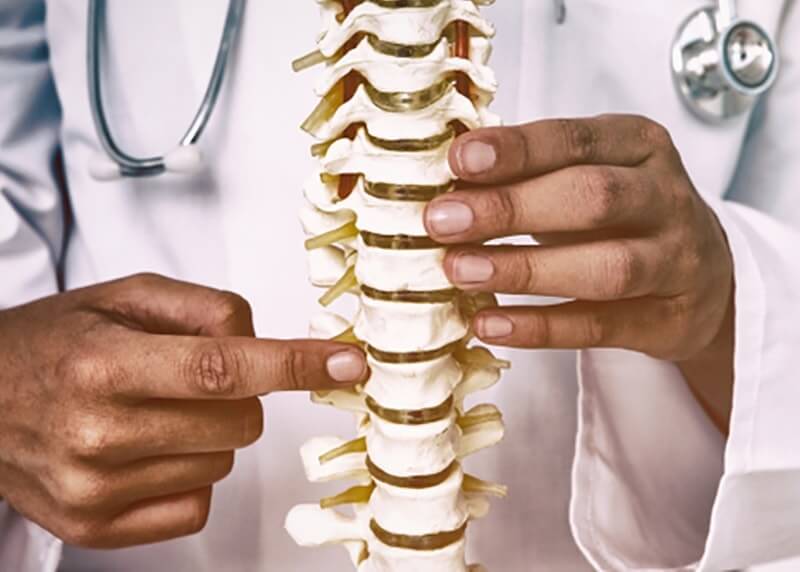Balloon Kyphoplasty
Balloon Kyphoplasty
Spinal fractures, which occur when one of the bones in the spine breaks or collapses, can be painful and debilitating. The bones are spongier than the bones in the legs, making them more vulnerable to damage. Unfortunately, the consequences of this damage can be far-reaching, resulting in posture changes, loss of height and chronic pain due to bone fragments pinching the spinal nerves.
Explaining Spinal Fractures
Spinal fractures can occur at any stage of life, although they tend to be more common in elderly adults. The most prominent cause of spinal fractures is osteoporosis, an age-related condition that leads to loss of bone density, making bones more susceptible to fractures. While the disease affects both men and women, women are nearly twice as likely to develop osteoporosis as their male counterparts.
Other potential causes of spinal fractures might include cancer or benign lesions that can also weaken the vertebrae. Other factors that can lead to a loss of bone density involve drinking too much alcohol, smoking or lack of activity. Once a person has suffered one fracture, they are also more likely to experience more in the future.
You may be suffering from a spinal fracture if you have any of the following symptoms:
- Pain in the neck or back
- Numbness and tingling
- Muscle spasm
- Changes in bladder or bowel function
The degree of your symptoms will depend in large part on the severity of your fracture. Some patients complain of ongoing, mild back pain while others find the symptoms keep them from performing daily tasks.
What is Balloon Kyphoplasty?
Balloon kyphoplasty is a minimally-invasive method of treating spinal fractures, also known as vertebral compression fractures or VCFs. This procedure inserts orthopedic balloons into the fracture site to attempt to move the bone back into its original position. At the same time, the balloon allows for the delivery of cement into the area to hold the bone in place and stabilize the fracture. Stabilization of the bone allows for healing to take place and can provide immediate relief from painful symptoms.
Is Balloon Kyphoplasty Right for You?
Balloon kyphoplasty is a useful treatment option for many who are diagnosed with a spinal fracture, but it’s not the best alternative for everyone.
Some indications that you are a candidate for this procedure might include:
- Diagnosed spinal fracture
- Persistent or chronic pain due to the injury
- Deformity of the spine as a result of the fracture
- Contraindications for traditional “open” spinal surgery
- Inability to get relief through conservative treatments like medication
In most cases, patients are first evaluated by their primary physician and then referred to an orthopedic surgeon for further diagnostics and treatment recommendations. If you are suffering pain that is limiting your movement or restricting your activities, an examination and diagnostic testing can determine whether balloon kyphoplasty might be a viable option for you.
Risks and Benefits of Balloon Kyphoplasty
Our surgeons have extensive experience in balloon kyphoplasty and will carefully go over all the benefits and risks with you at your consultation so that you can make an educated decision on whether you should move forward with this procedure
Benefits of Balloon Kyphoplasty
All surgical procedures have both benefits and risks to consider when deciding whether to move forward with the treatment. Benefits of balloon kyphoplasty include:
- Less invasive than traditional spine surgery
- Significant reduction in pain for most patients
- Increased mobility and ability to perform daily activities
- Restoration of vertebral body height in many cases
- Fewer restrictions on activities and days off due to back pain
Risks of Balloon Kyphoplasty
At the same time, balloon kyphoplasty carries risks like any surgical procedure. While the rate of complications is relatively low, some of those risks might include:
- Infection (antibiotics after surgery significantly decrease this risk)
- Cement leakage into surrounding muscle or tissue
- Embolism if cement migrates to the lungs or heart
- Nerve injury that can cause paralysis in rare cases
- Numbness and tingling that may be long-lasting
Balloon Kyphoplasty Overview
In most cases, balloon kyphoplasty can be performed on an outpatient basis, with either general or local anesthesia. Some patients may remain in the hospital overnight if their surgery is particularly complex. Balloon kyphoplasty is performed in a series of steps, which include:
Placement of the Balloon
During this operation, the surgeon fuses two or more of the small bones of the spine together to create stability and reduce associated discomfort. Different techniques can be used for this procedure, but all involve grafting in bone or a synthetic substance to “weld” the bone together.
Inflation of the Balloon
Once the balloon is in its proper place, it is inflated to elevate the vertebrae and restore it to its original position as carefully as possible.
Creation of the Cavity
The inflated balloon creates a cavity inside the vertebrae. Once the cavity is formed, the balloon can be removed.
Filling the Cavity
To maintain the new position of the vertebrae, your surgeon will apply bone cement into the cavity to stabilize the fracture. This internal case keeps the bone in place over the long term.
Recovery from Balloon Kyphoplasty
If your procedure is done as outpatient surgery, you should be released to go home a few hours afterward. You will receive a set of detailed post-operative instructions to follow that will allow your spine to heal fully and reduce your risk for complications during your recovery.
Patients are usually ready to resume their routine within a matter of days. Your surgeon will schedule a follow-up visit to measure your progress and answer any questions you might have. Patients will often have a rehabilitative program to strengthen the spine once it has fully healed.

